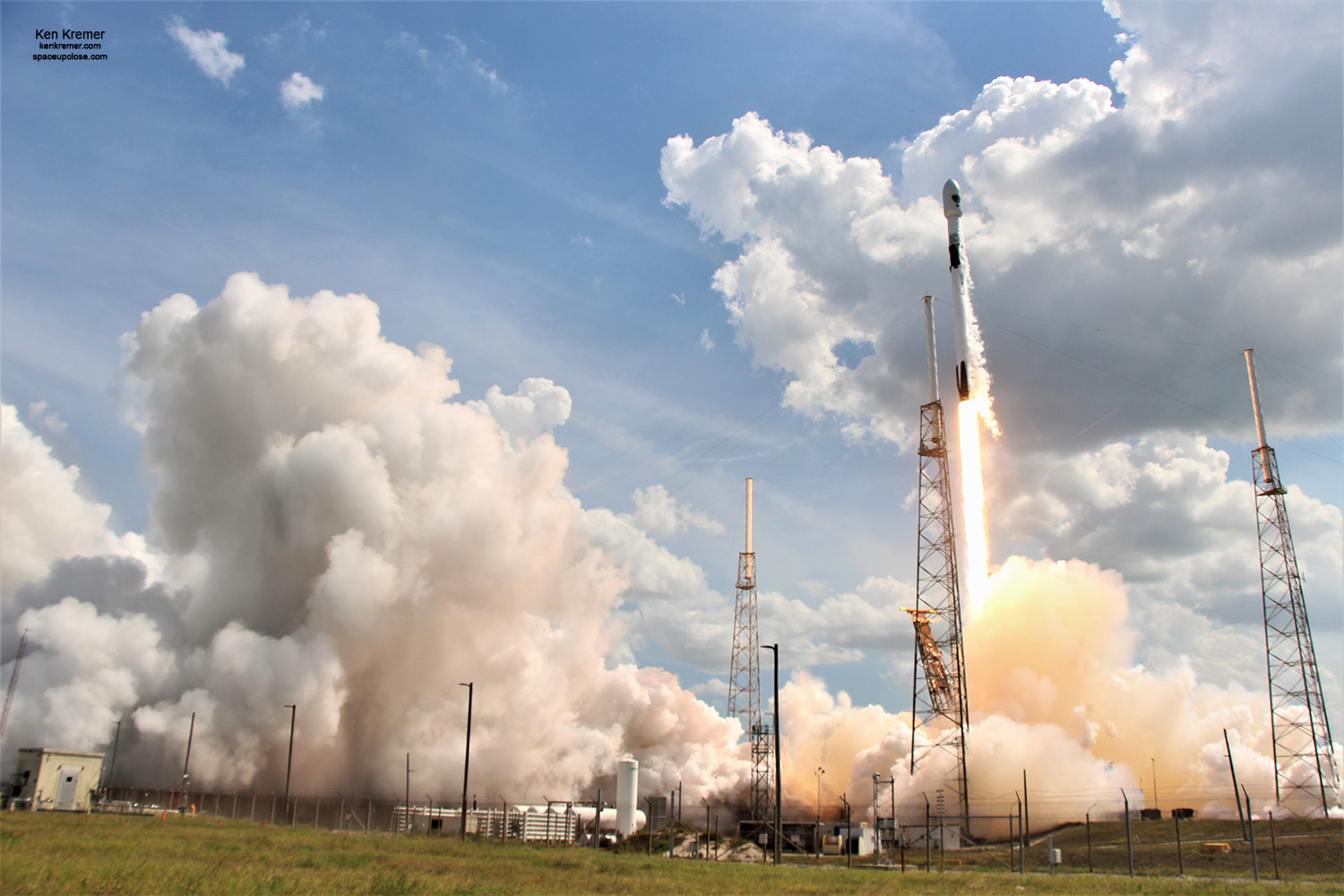
For SpaceUpClose.com & RocketSTEM
CAPE CANAVERAL SPACE FORCE STATION, FL – A brand new SpaceX Falcon 9 rocket successfully launched the third in the advanced new series of Global Positioning Systems III (GPS III) navigation satellites for the U.S. military and the new U.S. Space Force and delivered it to its intended medium Earth orbit (MEO) this afternoon, Tuesday, June 30 from the Florida Space Coast – but only after the weather improved and upper altitude winds relented just enough to allow for the beautiful event at the last possible moment of the window.
And some 8 minutes later the SpaceX team successfully landed the first stage booster on the ‘Just Read the Instructions’ or JRTI droneship prepositioned offshore in the Atlantic Ocean – a first for a National Security Space Launch (NSSL).
The spectacular liftoff of the Lockheed Martin-built GPS III Space Vehicle 03 navigation satellite mission on a new 23 story tall SpaceX Falcon 9 rocket took place at last at 4:10 p.m. (2010 GMT) Tuesday June 30 from seaside Space Launch Complex-40 on Cape Canaveral Space Force Station, FL.
Enjoy our Space UpClose launch gallery by Ken Kremer and Jean Wright – photos also featured at Spaceflight Now. Check back as the gallery grows.
Here’s a photo of today’s Falcon 9 rocket launch from Cape Canaveral, boosting the US military’s next GPS navigation satellite into orbit (📷: @ken_kremer).
LIVE COVERAGE: https://t.co/IJZ8yUwa6U pic.twitter.com/2BDBGZC70n
— Spaceflight Now (@SpaceflightNow) June 30, 2020
The GPS III-SV03 satellite provides the “gold standard” in position, navigation, and timing services and is the third on behalf of the U.S. Space Force launch and the second NSSL (National Security Space Launch) mission to be launched on a SpaceX Falcon 9.
U.S. Space Force commander Gen. Jay Raymond tweeted his congratulations to the team and tribute to Col. Thomas Falzarano :
A fitting tribute to a @SpaceForceDoD friend and teammate. Congrats @SpaceX @45thSpaceWing @AF_SMC @LockheedMartin on the successful launch of #GPSIII! https://t.co/IL6QSJ3bEF
— General Chance Saltzman (@SpaceForceCSO) June 30, 2020
“The successful GPS III SV03 launch and recovery serves as another step in our journey with industry partners to create innovative, flexible, and affordable services to meet NSSL mission objectives and propel U.S. dominance in space.” said Col. Robert Bongiovi, Launch Enterprise director, in a statement.
“I’m proud of my team’s 81st successful National Security Space Launch and look forward to our additional National Security Space missions with SpaceX.”
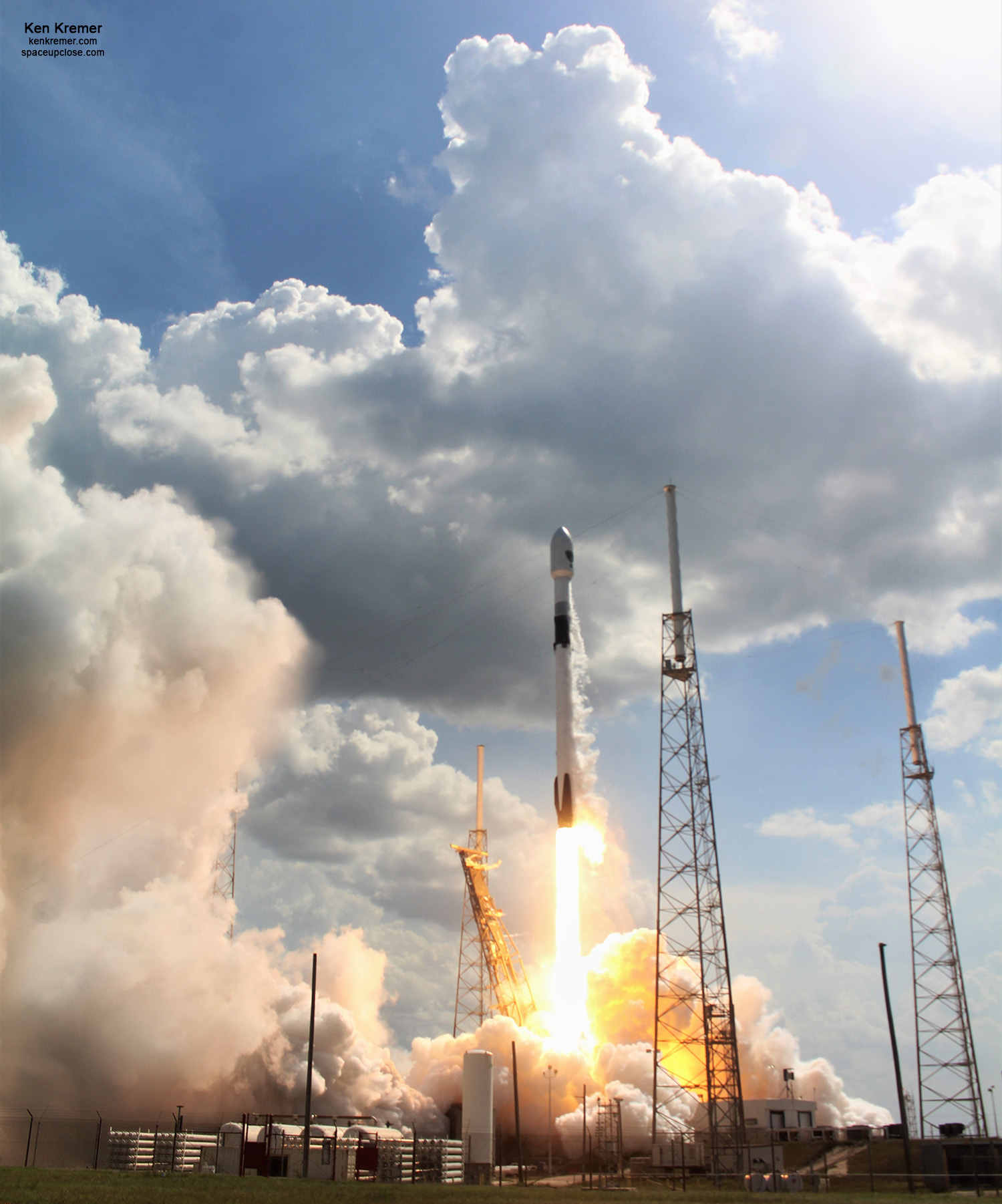
This mission also counts as the first where a first stage booster was recovered after a NSSL launch – but NOT for use by the military only by SpaceX for another customer.
Blastoff of the GPS III Space Vehicle 03 navsat only occurred after it was delayed to the very end of the 15-minute window that opened at 3:55 p.m. – due to excessive upper altitude winds over the Cape Canaveral launch site.
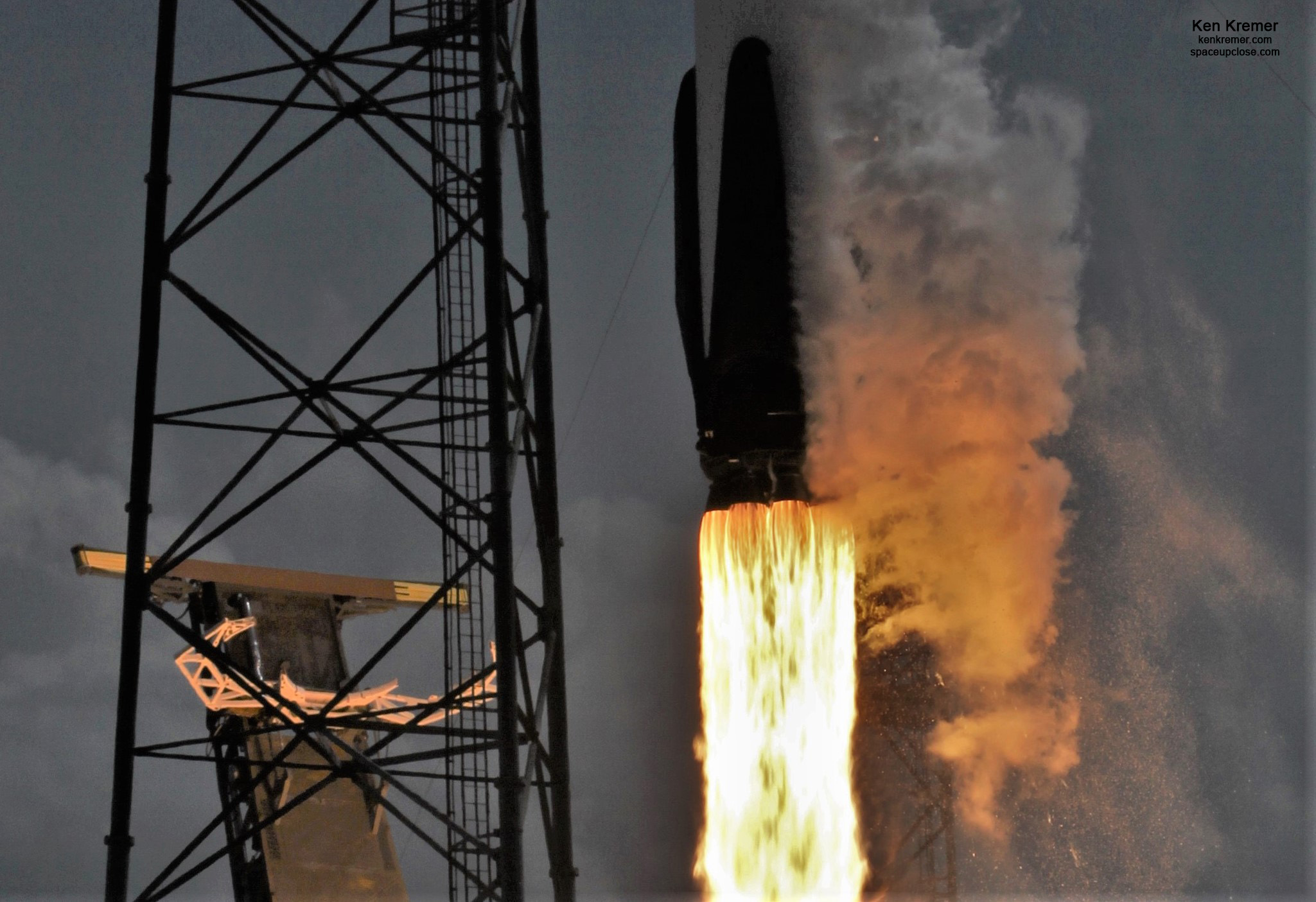
Threatening black clouds were also rolling into the region as forecast as we were ticking down to T Zero – so it was lucky that weather conditions fortuitously aligned to allow for the liftoff.
The approximately 9,505-pound (4,311-kilogram) GPS III-SV03 satellite now joins the GPS constellation of 31 currently operating satellites at this time – not including the decommissioned, on-orbit spares for the US military.

Today’s launch was the 3rd for a SpaceX Falcon 9 in June and continues a remarkable launch cadence.
It also counts as the fourth in four weeks starting with the Demo-2 launch of a SpaceX Crew Dragon for NASA with two NASA astronauts to the ISS on May 30.
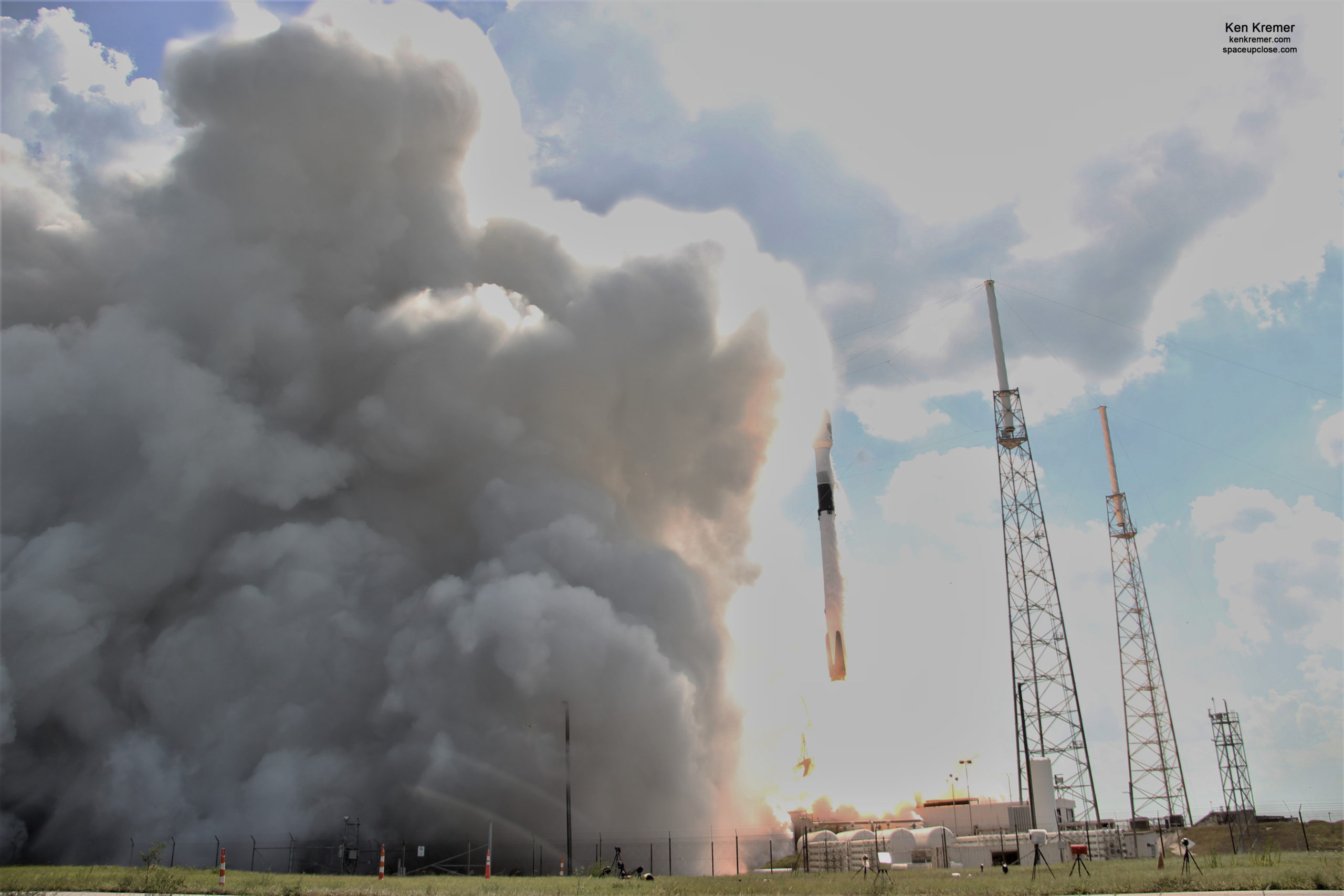
Overall this maiden launch of the first stage booster B1060.1 marked the 11th Falcon 9 launch of 2020 and 87th in the series.
The launch was delayed for 2 months due to restrictions imposed as a result of the coronavirus epidemic and “to implement new health and safety measures to protect launch and operations crew during the ongoing COVID-19 pandemic,” said SMC.
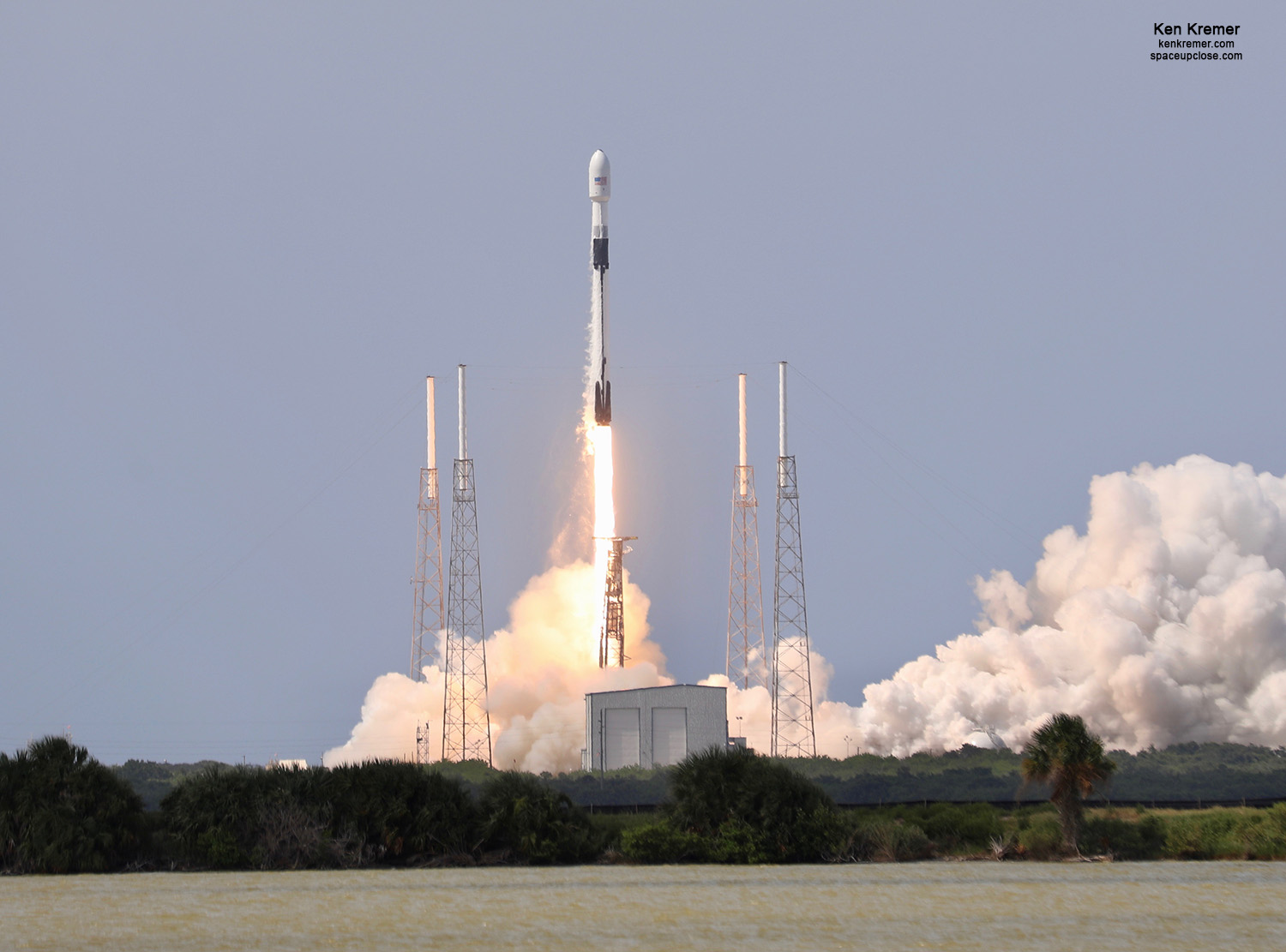
The Falcon 9 injected GPS III Space Vehicle 03 into its intended elliptical transfer orbit with an initial altitude ranging between about 250 miles (400 kilometers) and 12,550 miles (20,200 kilometers), at an inclination of 55 degrees to the equator.
It separated as planned one hour and 29 minutes after launch.
Deployment of GPS III Space Vehicle 03 confirmed pic.twitter.com/zYOeJj0xFX
— SpaceX (@SpaceX) June 30, 2020
Lockheed Martin confirmed contact with the satellite which is healthy and operationg as planned.
“After a successful launch this afternoon, the third Lockheed Martin (NYSE: LMT)-built GPS III satellite is now headed to orbit under its own propulsion. The satellite has separated from its rocket and is using onboard power to climb to its operational orbit, approximately 12,550 miles above the Earth.” Lockheed Martin said in a statement.
“Engineers and operators at Lockheed Martin’s Waterton facility will now begin on-orbit checkout and tests which are estimated to complete in two weeks. Operational use is expected to begin as early as August 2020,” said the Space and Missile Systems Center (SMC) in a statement.
“The GPS III program continues to build on its successes by delivering advanced capabilities for the United States Space Force, and maintaining the “gold standard” for position, navigation and timing.” said Col. Edward Byrne, Medium Earth Orbit Space Systems Division chief.
GPS III SV 03 has three times more accuracy and up to eight times improved anti-jamming capability vs the currently orbiting GPS constellation in the earlier GPS II series. A vast improvement for both military and civilian users of GPS.
T-minus 60 minutes. A check of current weather conditions shows all parameters are observed “go” at this time for launch of the Falcon 9 rocket from Cape Canaveral at 3:55:48 p.m. EDT (1955:48 GMT) with a GPS navigation satellite (📷: @ken_kremer).https://t.co/IJZ8yUwa6U pic.twitter.com/bJcpAlXinV
— Spaceflight Now (@SpaceflightNow) June 30, 2020
GPS provides positioning, navigation, and timing services for billions of users worldwide.
GPS III, the newest generation of GPS satellites, brings new capabilities to users, including three times greater accuracy, and up to eight times improved anti-jamming capabilities
GPS satellites operate in medium earth orbit (MEO at an altitude of approximately 20,200 km (12,550 miles) in six planes. Each satellite circles the earth twice per day.
GPS provides the “Gold Standard” of position, navigation, and timing services for billions of users worldwide. GPS III, the newest generation of GPS satellites. It brings new capabilities to users, including three times greater accuracy, and up to eight times improved anti-jamming capabilities, says the USAF.
“We excited to be here for the launch of our third GPS III satellite… GPS III SV03. It will soon join SV01 and SV02 which were declared operational in January and April,” said Tonya Ladwig, vice president of Navigation Systems Division, Lockheed Martin Space Systems, at a prelaunch telecon with the media last week.
“GPS III now offers new technology and much greater capability over 29 of 31 of the current satellites in the GPS constellation. GPS III provides 3x greater accuracy and up to 8x improved anti-jamming power — and adds a new L1C Civil signal.”
“Significantly, this satellite, GPS III SV03, will be the 22nd M-Code enabled satellite in the constellation — just two short now of global coverage. M-code is a more-secure, harder-to-jam or spoof signal for our military forces,” said Ladwig.
SpaceX successfully recovered the Falcon 9’s new first stage on the “Just Read the Instructions” (JRTI) droneship, which will be stationed in the Atlantic Ocean about 400 miles (640 km) off the Carolina’s coast.
Falcon 9’s first stage has landed on the Just Read the Instructions droneship! pic.twitter.com/5zYhTFDUsM
— SpaceX (@SpaceX) June 30, 2020
JRTI is heading back to Port Canaveral for arrival perhaps around weeks end.
SpaceX also dispatched their two special fairing catching boats GO MS TREE and GO MS CHIEF to retrieve the payload fairing halves – this time by scooping them out of the corrosive ocean waters rather than mid-air catch – for possible reuse.
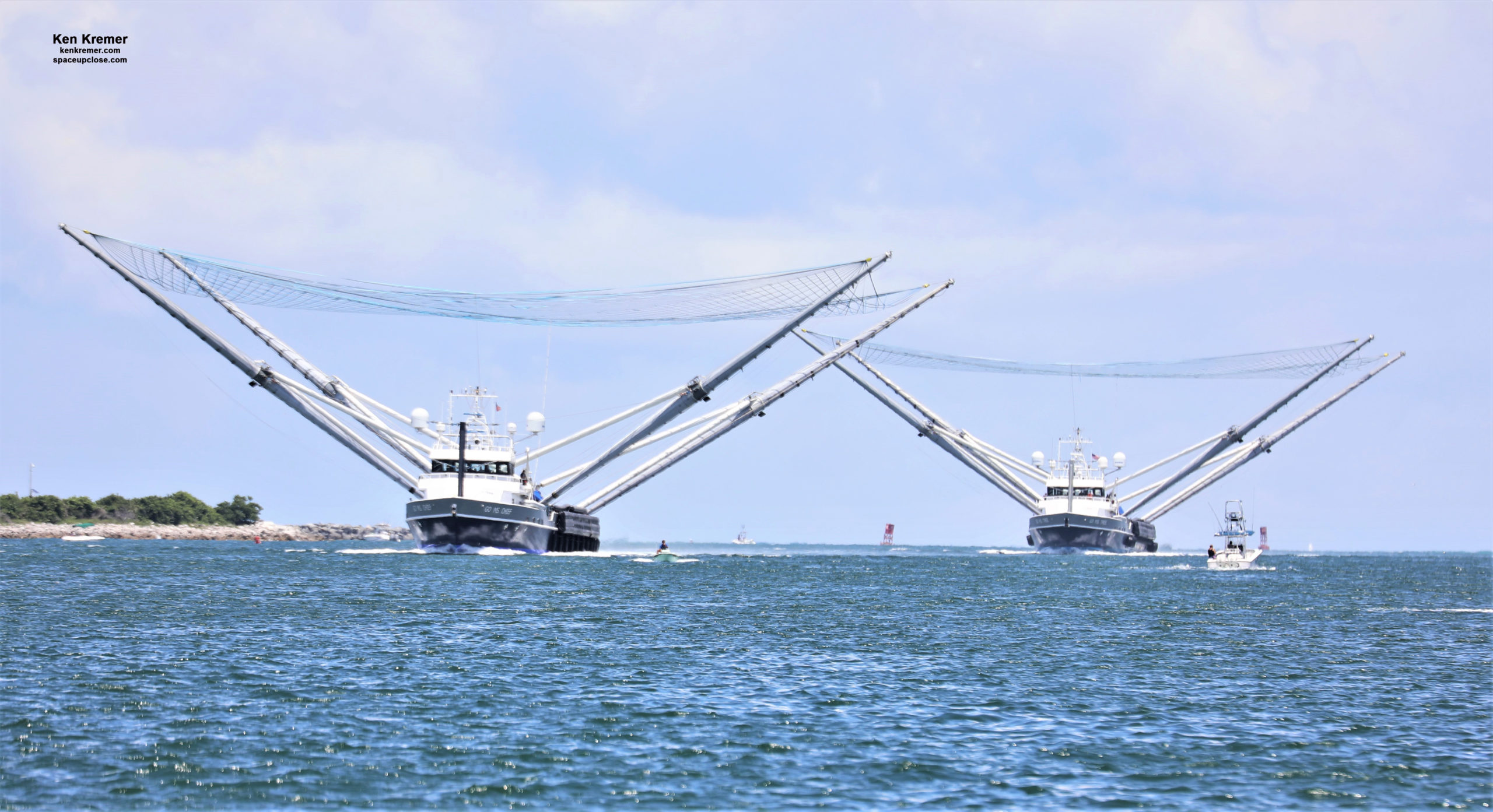
Both fairing boats are also returning to Port Canaveral.
The U.S. military has not yet approved use of recycled rockets to launch its satellites to space- but are evaluating options for the future, military officials said at a media telecon last week.
The massive 5 ton Lockheed Martin-built GPS III Space Vehicle 03 satellite is the most powerful Global Positioning System (GPS) satellite ever built as part of the GPS III series.
Lockheed Martin is the prime contractor for the GPS III navigation satellite series comprising a constellation of 10 satellites.
“The U.S. economic benefit of GPS is estimated to be over $300 Billion per year and $1.4 Trillion since inception. We believe that continued investment in GPS… to update technology… improve its capabilities… is worth it,” said Ladwig at the prelaunch briefing.
Space Operations Command’s 50th Space Wing and 2nd Space Operations Squadron in Colorado operates the GPS constellation.
SpaceX launched the first in this GPS III series on a Falcon 9 in Dec 2018 followed by ULA on a Delta IV Medium in August 2019.
See our earlier articles and photos.
SpaceX will launch the remaining GPS III series satellites says SMC.
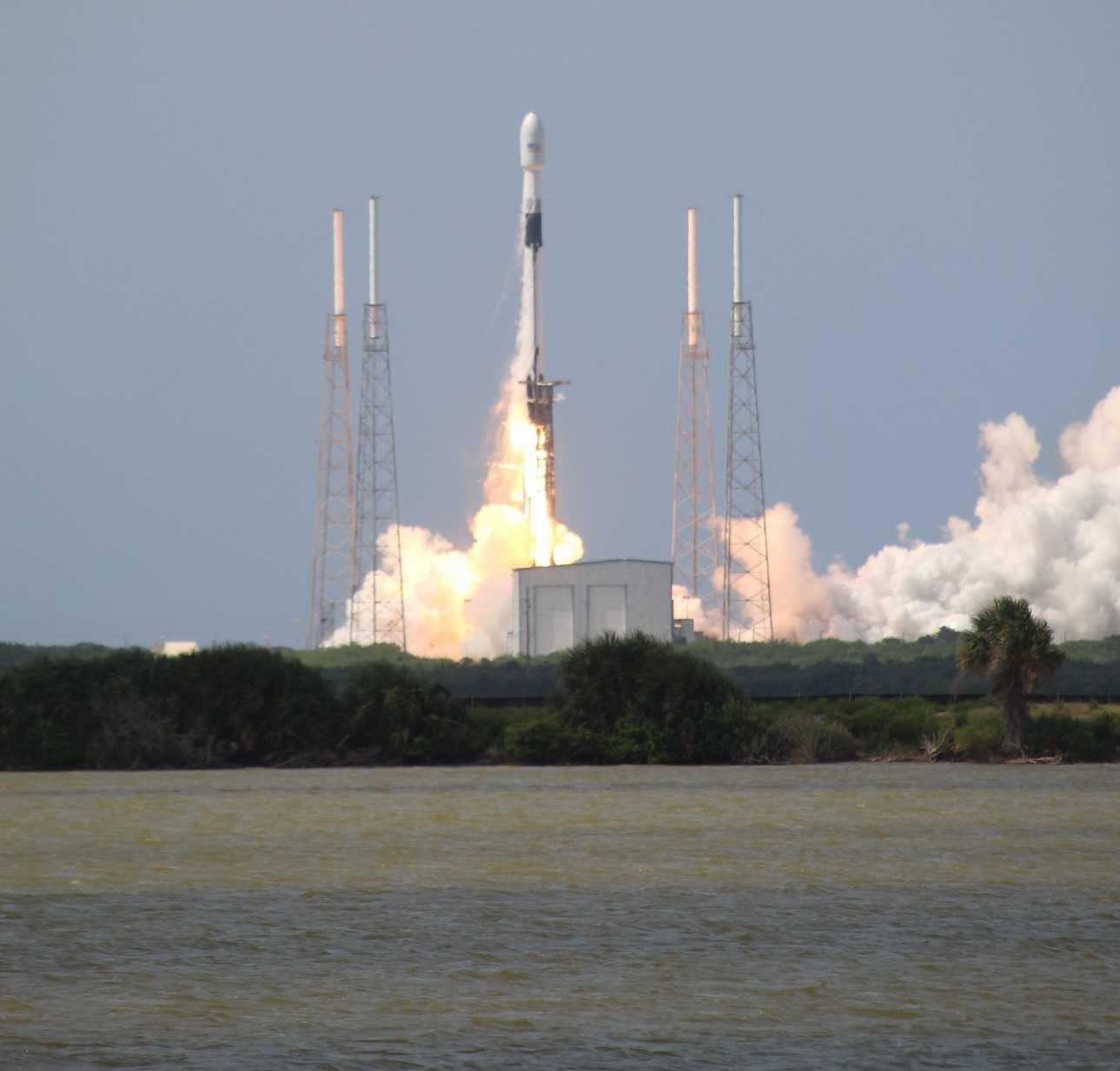
GPS provides the “Gold Standard” of position, navigation, and timing services for billions of users worldwide. GPS III, the newest generation of GPS satellites. It brings new capabilities to users, including three times greater accuracy, and up to eight times improved anti-jamming capabilities, says the USAF.
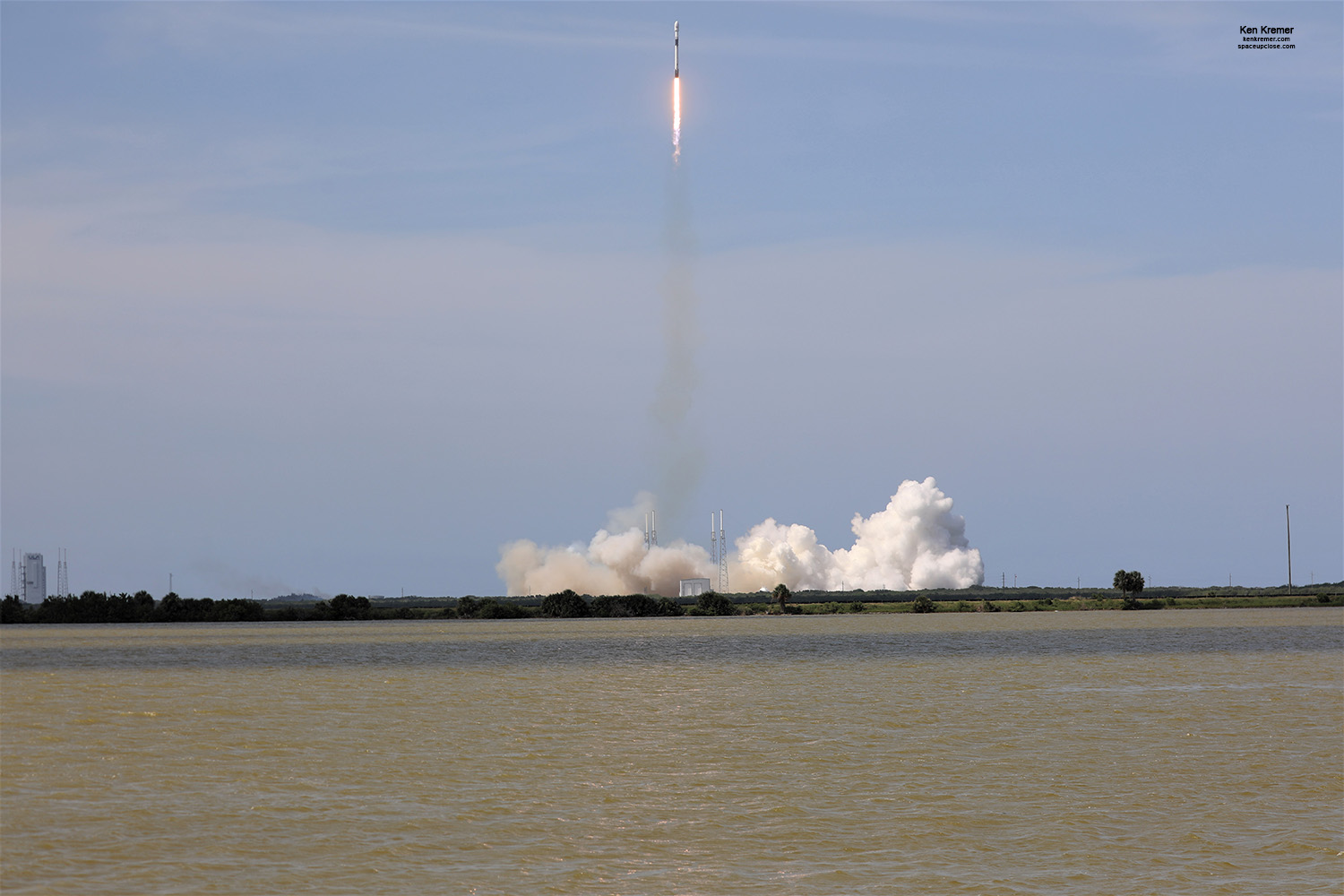
SV03 is the third in the $5.8 Billion GPS III constellation that eventually will include up to 32 satellites counting a recent $7.2 Billion USAF contract with Lockheed Martin to build an additional 22 GPS III Follow On (GPS IIIF) program satellites.
This $558 million GPS III SV03 mission is historic in a number of ways. The first satellite in the GPSIII series SV01 counted as the first National Security Space (NSS) mission launched aboard a SpaceX Falcon 9 launch vehicle from Cape Canaveral Air Force Station, Florida.
The new GPS III series satellites also have a much longer design lifetime of 15 years, 25 percent longer than any of the prior GPS II series satellites on-orbit today and double the 7.5 year lifetime of the initial GPS series.
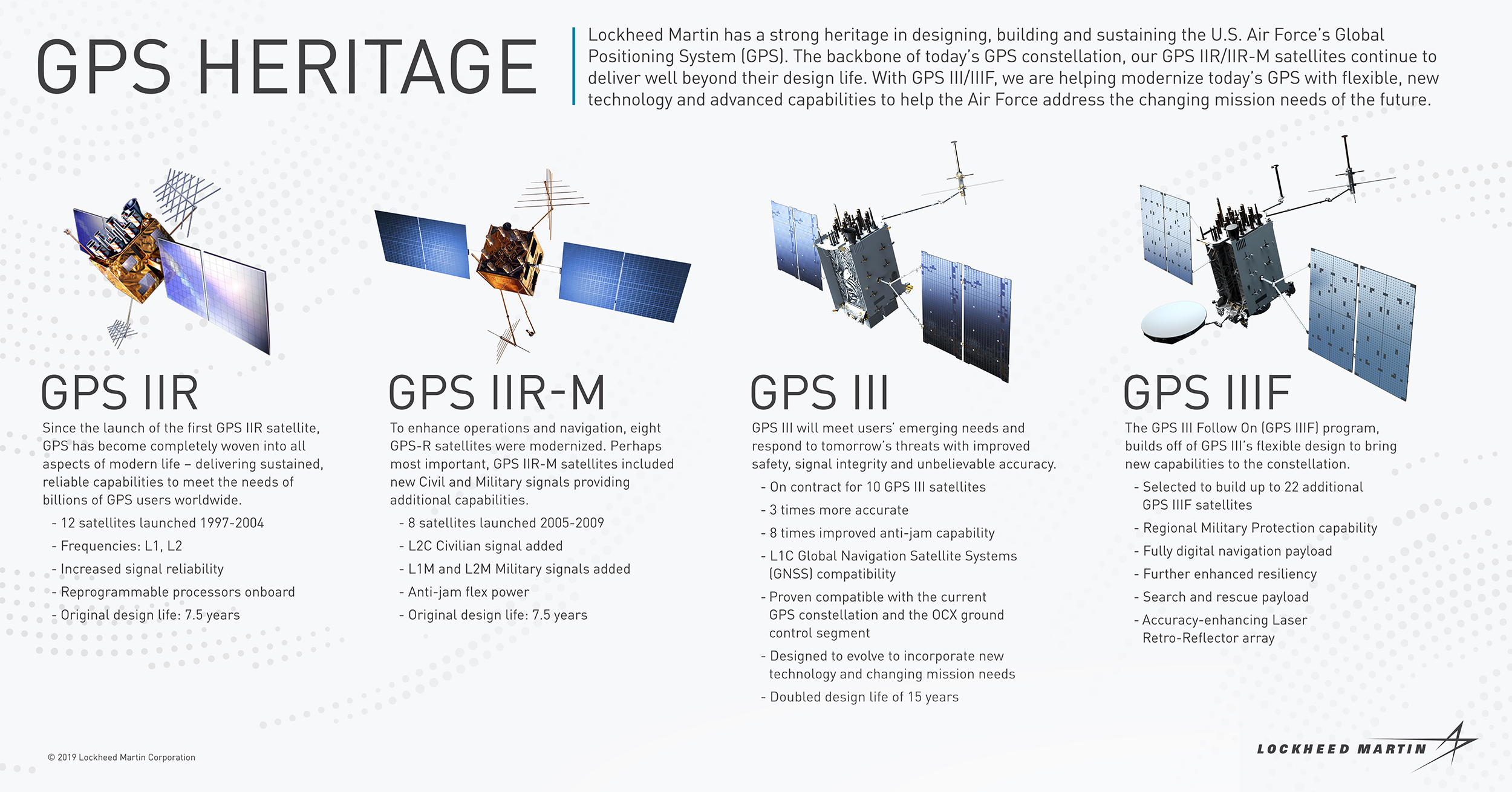
The path to launch was cleared after the SpaceX team conducted a successful hold down static fire test on June 25 – as witnessed by Space UpClose.
That static fire was the second Falcon 9 engine test in less than 16 hours- following one for the Starlink 9 mission launch.
Read our static fire story and eyewitness photos – also featured at WKMG CBS News 6 Orlando.
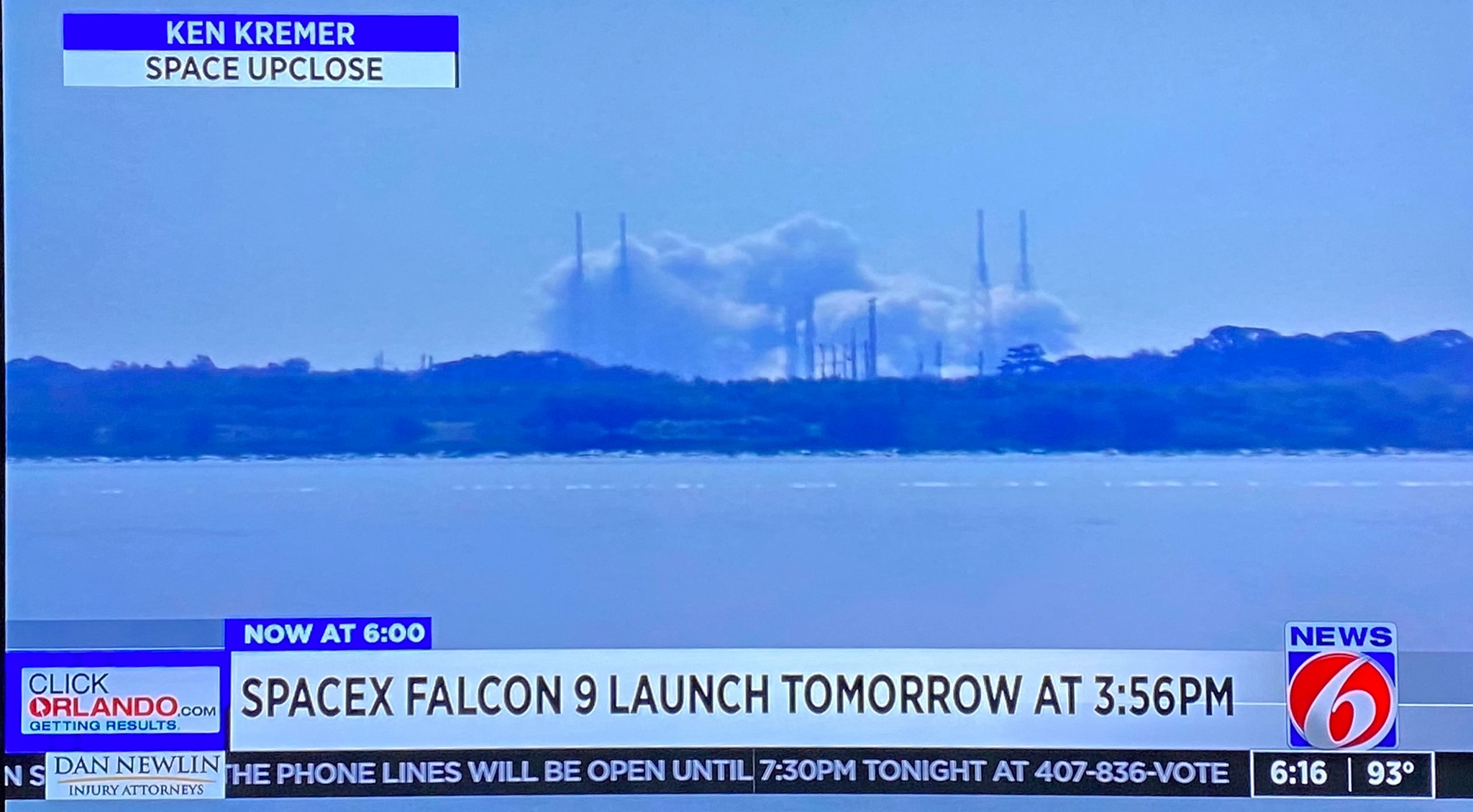
Watch my commentary about the SpaceX Starlink/GPS launches at WFTV ABC 9 Orlando TV News on Jun 25
Watch my live post interview about SpaceX launches, Artemis, ULA WDR for Mars 2020, Mars 2020 rover and more at the American Space Museum ‘Stay Curious’ daily weekday show on June 22, 2020
https://www.facebook.com/SpaceWalkOfFame/videos/304165737643422/UzpfSTY1OTc4NDE4NjoxMDE1ODc1MTcyNTAxNDE4Nw/
Watch the entire live SpaceX launch broadcast here:
Watch Falcon 9 launch of GPS III Space Vehicle 03 → https://t.co/bJFjLCzWdK https://t.co/AkPClOKWG0
— SpaceX (@SpaceX) June 30, 2020
Watch Ken’s continuing reports about GPS, Mars 2020, Commercial Crew and Artemis for live reporting of upcoming and recent NASA, ULA and SpaceX launches including Demo-2, Starlink, X-37B, Solar Orbiter and more at the Kennedy Space Center and Cape Canaveral Space Force Station.
Stay tuned here for Ken’s continuing Earth and Planetary science and human spaceflight news: www.kenkremer.com –www.spaceupclose.com – twitter @ken_kremer – email: ken at kenkremer.com
Dr. Kremer is a research scientist and journalist based in the KSC area, active in outreach and interviewed regularly on TV and radio about space topics.
………….
Ken’s photos are for sale and he is available for lectures and outreach events
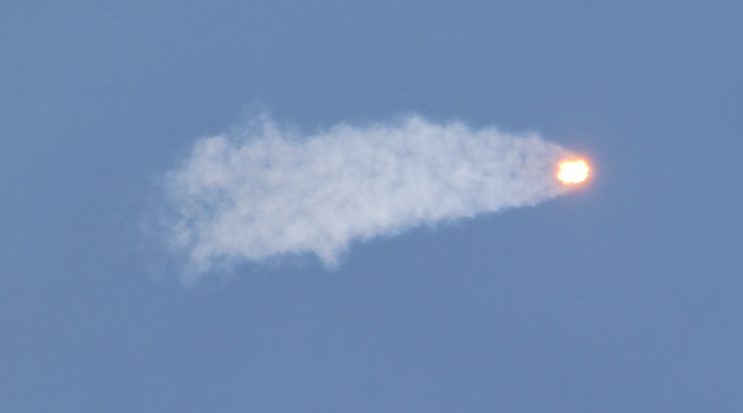
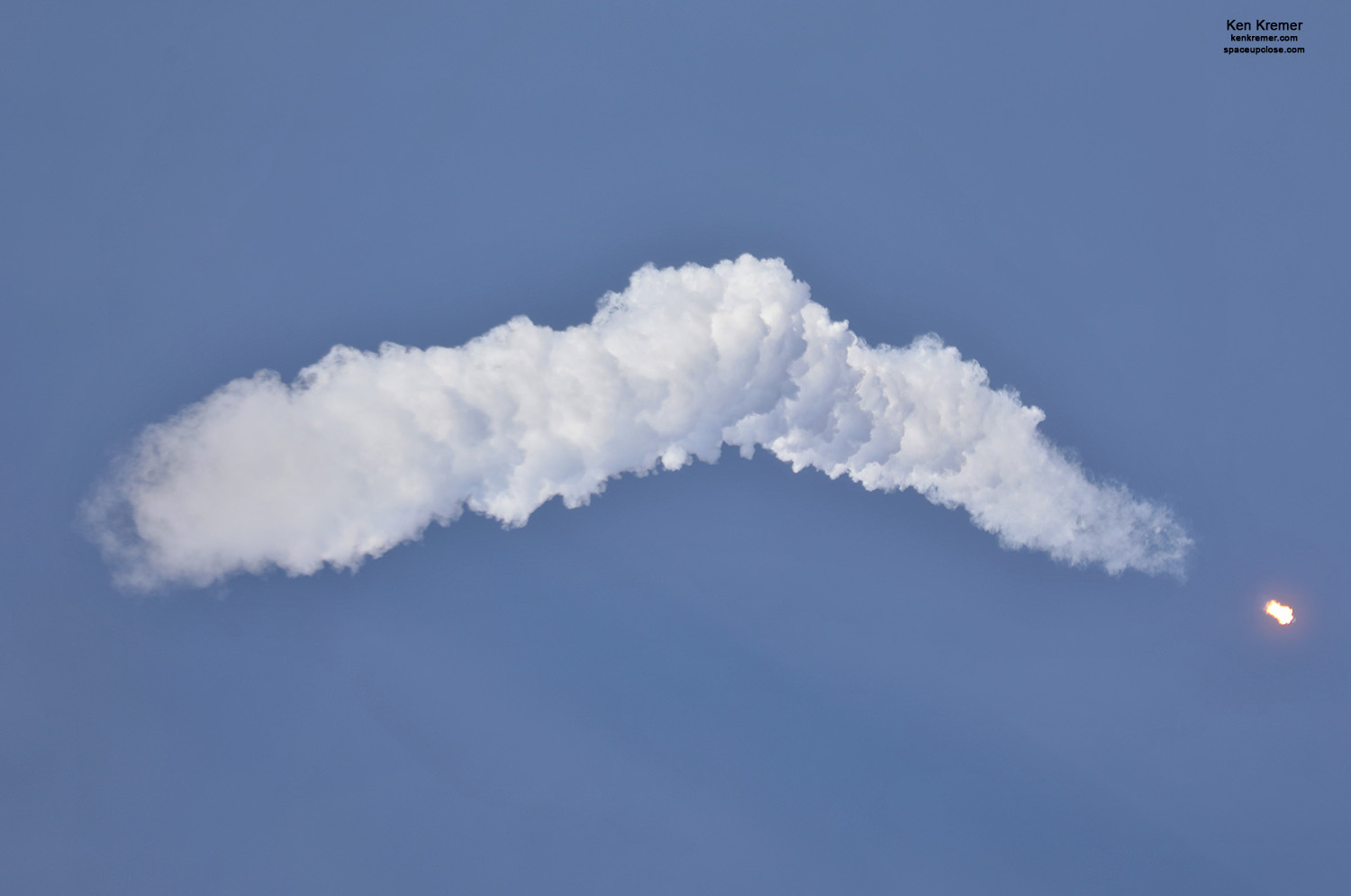
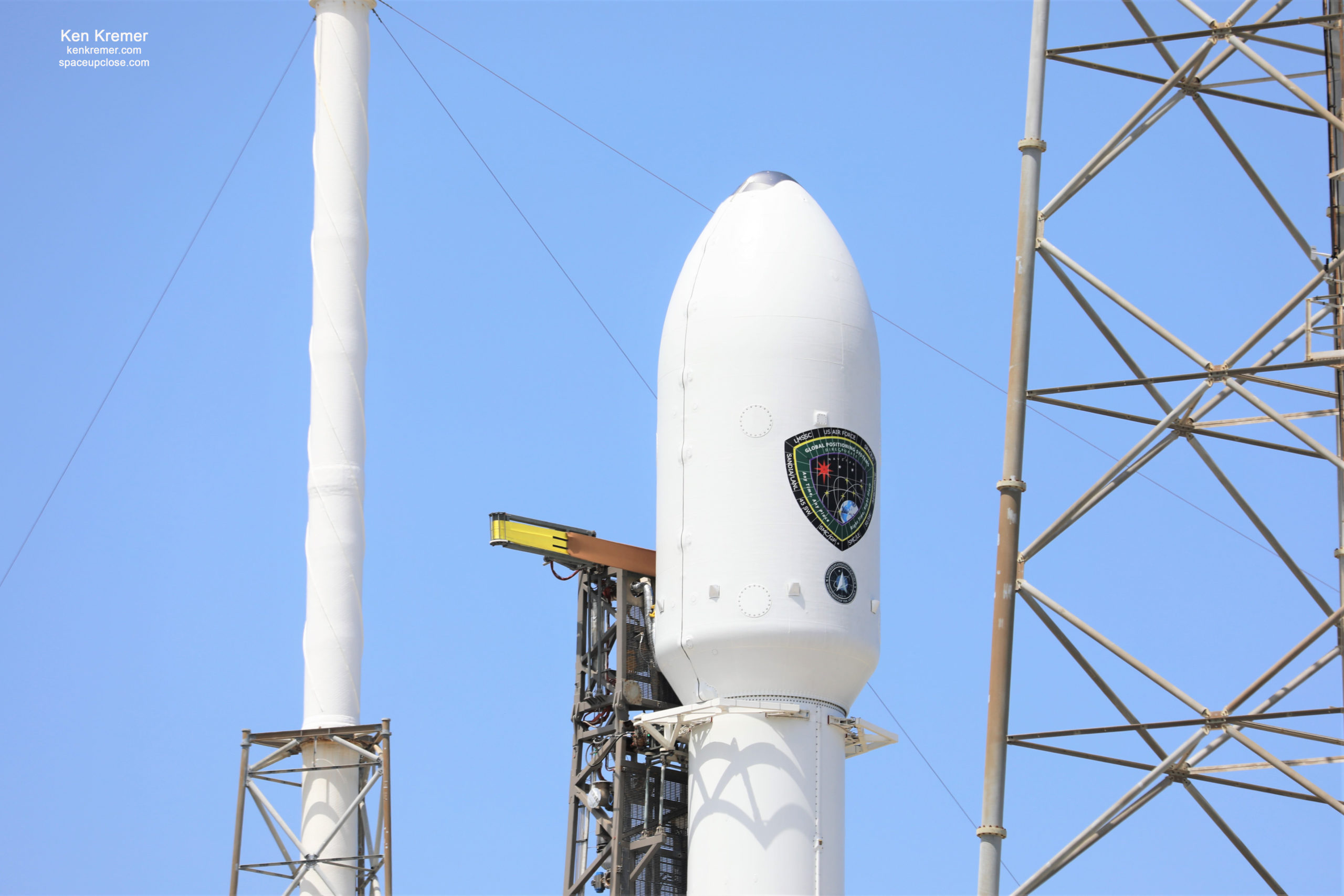
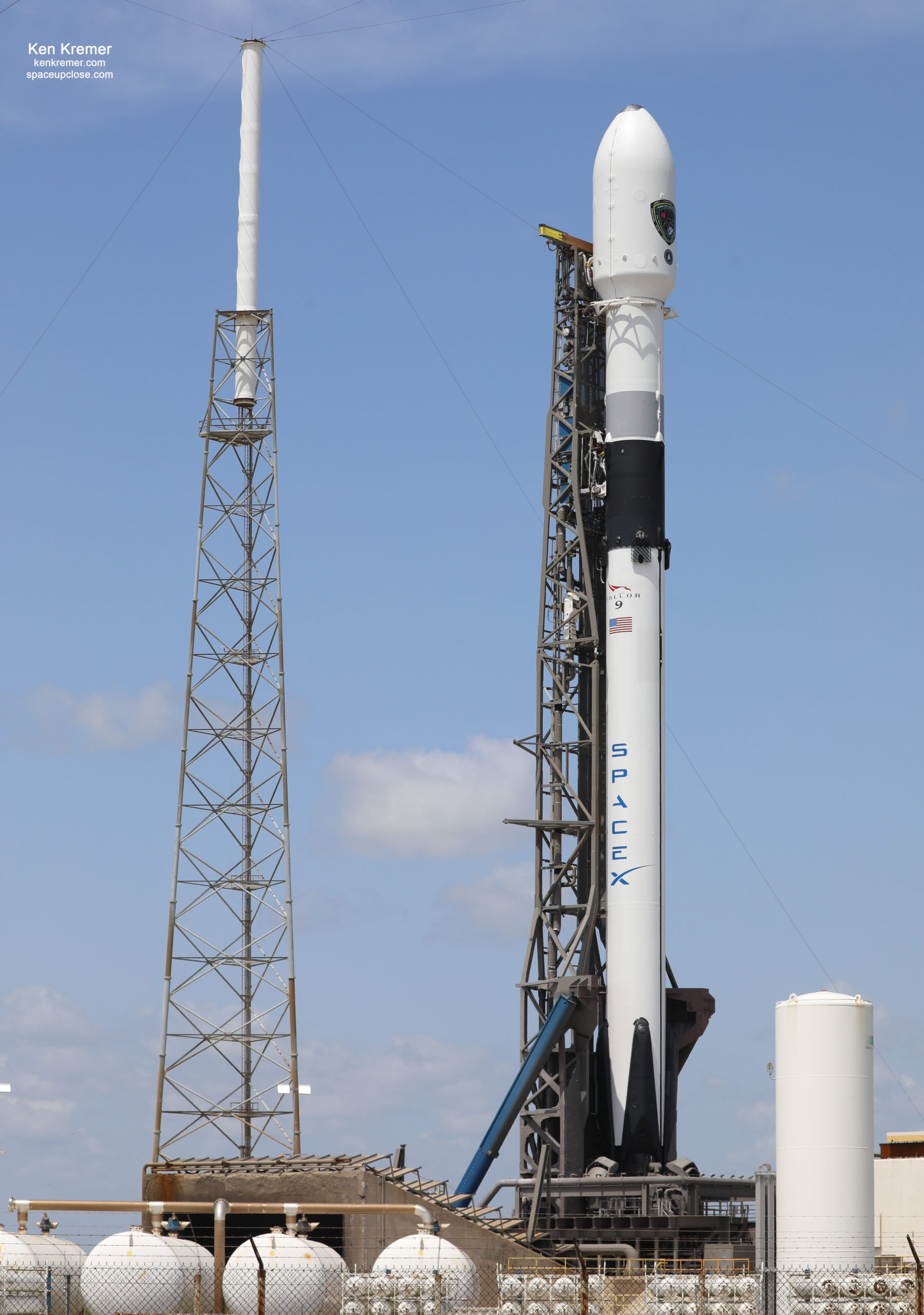
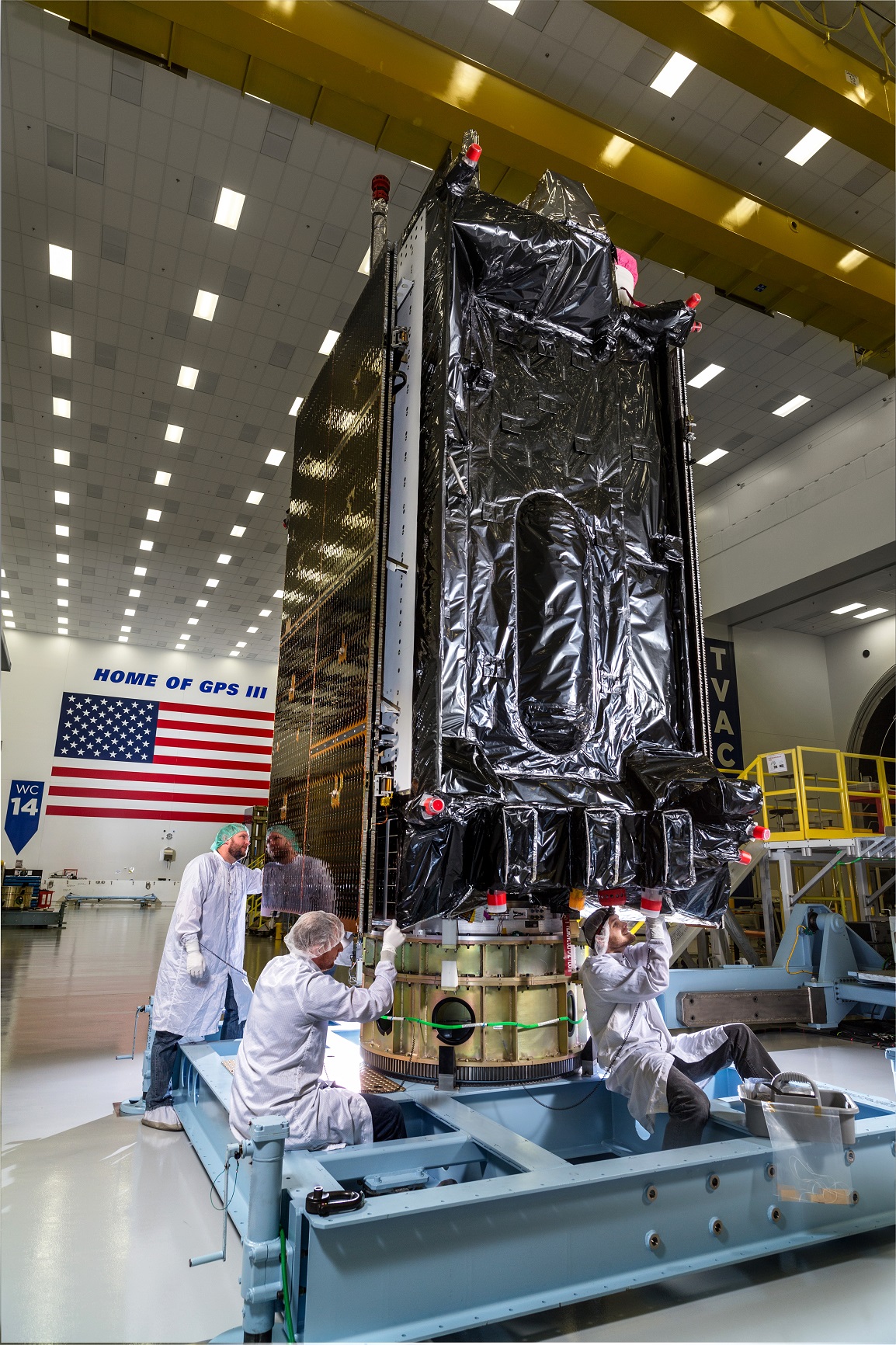
x




